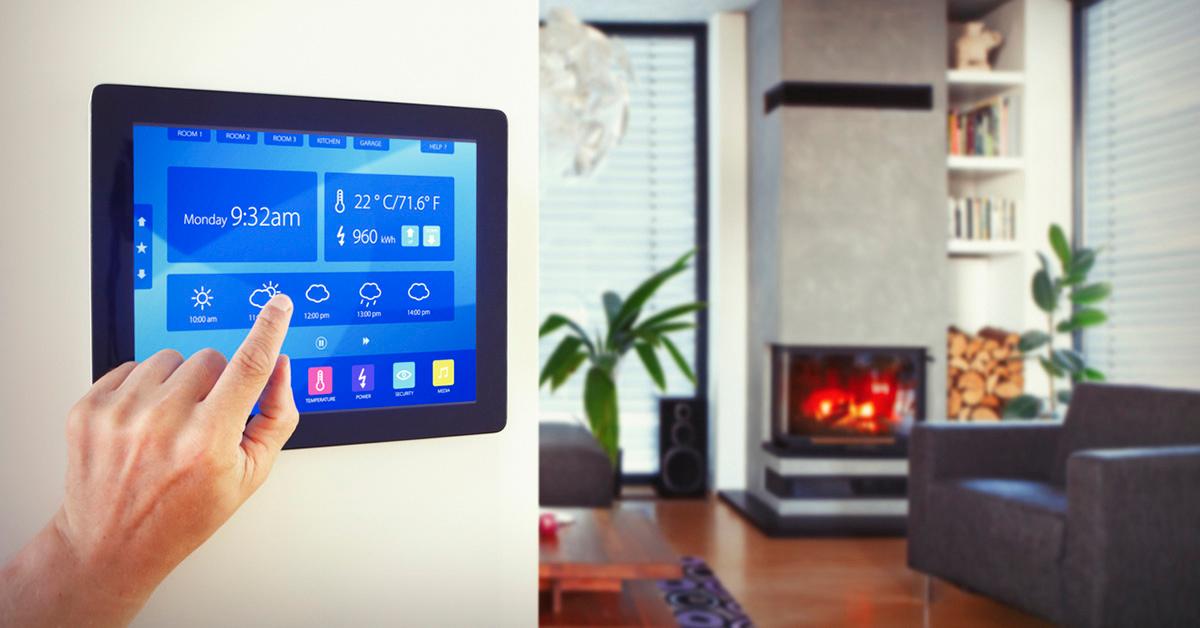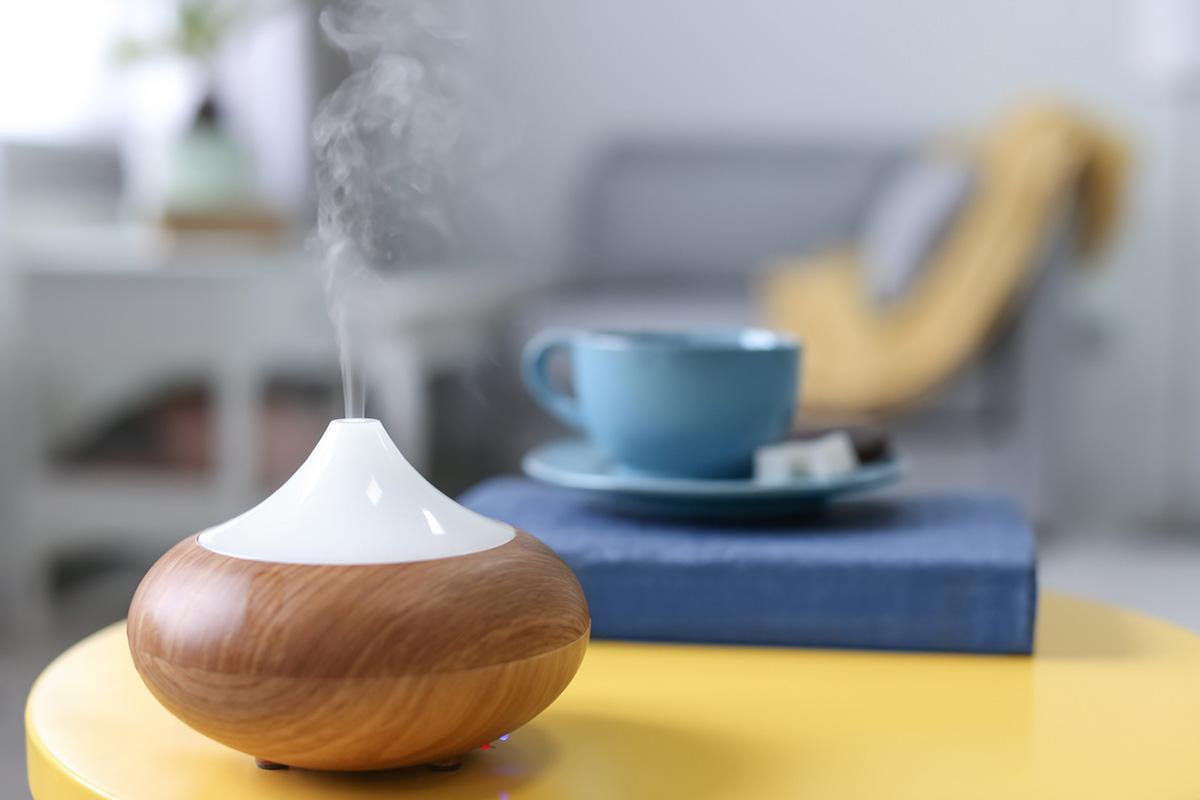5 Things Negatively Affecting Your Air Quality
Americans spend around 90 percent of their time indoors — and indoor air can often be harsher than outdoor air.
Updated June 20 2019, 4:09 p.m. ET

As a zero-waster, there’s so much to take into consideration. I have to find sustainable alternatives to all kinds of plastic (plastic baggies, plastic bottles, plastic wrap), non-toxic options for our periods (hello, silicone menstrual cup that’s good for 10 years), and avoid microfibers at all costs. With all this bouncing through our brains all day, I shouldn’t have to be worried about indoor air quality, too. After all, Americans spend 90 percent of their time indoors, whether it’s at home, in a school or office setting, or in some other kind of building.
Unfortunately, it’s just the reality: Our indoor air is not always as safe as we think.
According to the United States Environmental Protection Agency, pollutants indoors are often two to five times higher than they are in outdoor concentrations. That might not seem particularly significant, but when you factor in how high concentrations often induce respiratory issues like chronic obstructive pulmonary disease or asthma, that statistic seems all the more crucial.
Yikes, right? What’s a zero-waster to do?
First thing’s first, you can learn about what kinds of things are negatively affecting your indoor air quality. Then, we can take steps to make the best decisions for our air quality.
Keep reading to find out five things that are negatively affecting your air quality!
Volatile Organic Compounds (VOCs)

First on the list are volatile organic compounds, also known as VOCs. This one is likely the easiest fix. It just means knowing what chemicals are in the furniture, bedding, and other products that you buy. The more non-toxic stuff you buy, the more likely your home has purer air quality.
VOCs are pollutants or chemicals that have a high vapor pressure at ordinary room temperature. Large concentrations of VOCs can lead to serious health effects like eye, nose, and throat irritation, headaches, nausea, and can also damage our liver, kidneys, and central nervous systems. Some VOCs like benzene and formaldehyde are even linked to cancer. In short, they can make you really, really sick.
So, where are VOCs coming from? The most common forms of indoor VOCs include acetone, benzene, and formaldehyde. These VOCs most commonly get released into the air through cleaning products and aerosol fragrances, solvents and paints, and wood preservatives.
So, what can you do? Store your paint thinners, solvents, and wood preservatives outside of the house and make sure that when you use them, the area in which you use them is well-ventilated. In general, it might be a smart, health-conscious decision to reevaluate the cleaning products you use. Are they zero VOC or low VOC? Don’t forget that on most surfaces, a combo of citrus peels and vinegar works wonders. But these aren’t the only dangerous sources of VOCs.
Everything from your furniture to your bedding to the candles you burn can affect the air quality thanks to VOCs. Mattresses can contain polyurethane foams, which when mixed with flame retardants, admit VOCs. Pillows are also commonly made with polyurethane foams and if your bedding was treated with pesticides, then your sheets and duvet likely emit VOCs, too. Even candles are often made with toxins or toxic wicks. Your best bet is a pure beeswax candle; avoid paraffin at all costs, even paraffin blends. For instructions on how to detox your room, check out our guide to toxins in the bedroom.
Carbon dioxide (CO2)

We all know what carbon dioxide is and the negative effects it can have on our health. But did you know that it can also contribute to negative indoor air quality?
We all make CO2 naturally, even our animals. If a ton of people live in your house, that’s a lot of respiration going on. Combine that with poor ventilation and your home might have a substantial concentration of CO2. Other causes of too much CO2 indoors include malfunctioning air conditioners and soil camping, the process of damp weather causing the soil to expand and release excess gases. Other causes of CO2 concentrations include burning fossil fuels for heating.
It’s colorless, odorless, and therefore, pretty difficult to measure. Luckily, there is a pretty easy way to monitor your indoor CO2 levels. All you have to do is make sure your home is properly ventilation. Poor ventilation keeps everything stuck inside, that’s why it’s a key ingredient to improving indoor air quality.
You can improve your home’s ventilation by installing screens on windows and doors. Leaving windows and doors open whenever possible also helps the air quality. Additionally, taking proper care of your heating, ventilating, and air conditioning system is crucial; the HVAC should be inspected every one to two years.
And of course, every home should have an indoor carbon dioxide detector installed inside.
Temperature

Think the quality of your air doesn’t care about the temp? Think again. First of all, dust mites thrive in a warmer climate and secondly, high temperatures actually cause the chemicals inside your home to leach out more quickly.
Of course, too low of a temp isn’t good either. You may notice physical symptoms like shivering or a decreased circulation in your hands or feet. The temperature is also directly associated with varying degrees of productivity and sluggishness, so that’s another thing to keep in mind (especially if you live that #WorkFromHome life).
Portable AC units and window units typically cut down on cost, energy, and do wonders for indoor air quality. In the summer months, your indoor temperature should be between 73 and 79 degrees Fahrenheit, while in the winter months, it can go as low as 68, as high as 76.
Dust and other allergens

Dust mites might be to blame for your itchy eyes, sneezing, coughing, congestion, and headaches. They might even contribute to issues like chest tightening and difficulty sleeping. These little buggers actually feed on dead flakes of human skin and thrive in warm temperatures upwards of 68 degrees Fahrenheit. What’s worse, one small dust mite can contain dead skin, mold, and pet dander, so you’re inhaling a cocktail of allergens.
Unfortunately, it’s physically impossible to eradicate dust from the air. But, of course, you can do things to reduce it. One of the best ways to ensure that your air is free of dust and other allergens is investing in an air purifier. For the cleanest possible air, you’ll want a High-Efficiency Particulate Air Filter (HEPA). These babies circulate air through a fine mesh system and trap all the yucky stuff. When running the purifier, keep the doors closed to ensure the locked-in air gets vigorously purified. After all, the more times the air goes through the purifier, the cleaner it gets.
Humidity

The last thing you can do to improve your home’s indoor air quality is get a dehumidifier or humidifier. (Which one you buy depends on your home’s humidity levels.) In a similar way to how temperature affects the air quality, humidity levels that are too-high or too-low can result in negative effects.
Humidity levels that reach above 50 percent can worsen factors like mold and mildew, which can cause lung irritation, respiratory issues, and even illness. On the other hand, humidity levels that fall below 30 percent can cause throat soreness, dry eyes and nose, and irritation of the skin.
If your humidity levels fall below 30 percent, you’ll want to get a humidifier. A humidifier will add more moisture to the air. But if your levels are above 50 percent, you’ll want a dehumidifier, which does the opposite. Dehumidifiers soak up the moisture from the air, improving the overall air quality.